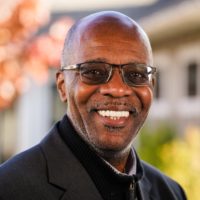Meet MAEC Staff – Daryl Williams

At MAEC, collaboration and shared learning are key as we work towards education equity. It is our privilege to nurture a team of innovative, dynamic leaders and rising leaders in this field. In this blog series featuring members of MAEC staff, meet Associate Director of the Center for Education Equity, Daryl Williams!
Who is an advocate or activist that you admire, and why?
In the early 1970s, I attended college with a student (Wayne Moore) who was wrongly accused of arson and conspiracy in Wilmington, North Carolina as they protested the lack of progress in implementing integration and other civil rights reforms. Wayne and nine others were known as the Wilmington Ten. The students were convicted and received sentences up to 29 years in prison. These young students sacrificed their college education and their lives to fight against injustice. The case against the Wilmington Ten gained international attention. Amnesty International took up their case in 1976 to provide legal counsel to appeal the convictions. It was not until 2012 that the federal courts overturned the convictions and the Governor of North Carolina pardoned the Wilmington Ten, including the four who were already deceased.
What does education equity mean to you?
I define education equity as an intentionally designed structure that provides access and opportunity to resources (funding, materials, curricula, human resources, etc.) to meet the diverse needs of students regardless of race, gender, religion, ability/disability, economic status, language, and any other human characteristic. It is intentional because educators must consciously construct teaching and learning environments and provide the necessary resources to support every child’s particular circumstance.
Tell us about a book in your office you think everyone should read.
We Were the Fire: Birmingham 1963 by Sheila Moses. This is the story of Rufus Jackson Jones, an eleven year old Black boy who stands up for civil rights in Birmingham, Alabama in 1963. Birmingham was the place Dr. Martin Luther King, Jr. called the most segregated place in America. During this time, Black adults were trying to draw attention to the cause of injustice and to show that separate is not equal. Rufus’s dad and other laborers and homemakers wanted to participate in marches, but were fearful of losing their jobs and would be subjected to mistreatment by the local authorities. Recognizing that their parents would not market, Rufus and his friends took action. In May 1963, Rufus and his buddies joined thousands of other children to peacefully protest in a local park. The children were met with policemen and firemen who turned powerful water hoses on them. Rufus and his friends realized that they were on fire. The heroism of these kids became known as the Children’s Crusade and was an important turning point in the civil rights movement.
Tell us about a book on your bedside table you think everyone should read.
Unfortunately, this is the latest book that I have found time to read in a long time. My work as the Associate Director of the Center for Education Equity and as a faculty in the college of doctoral studies at the University of Phoenix does not provide a lot of free time to enjoy moments for pleasure reading.
What is one thing that brings you joy?
As empty nesters, my wife and I love international traveling and we have several trips planned including tours in Egypt, South Africa, South Korea, and Japan. I also find great joy in caring for our small puppy, Major.

